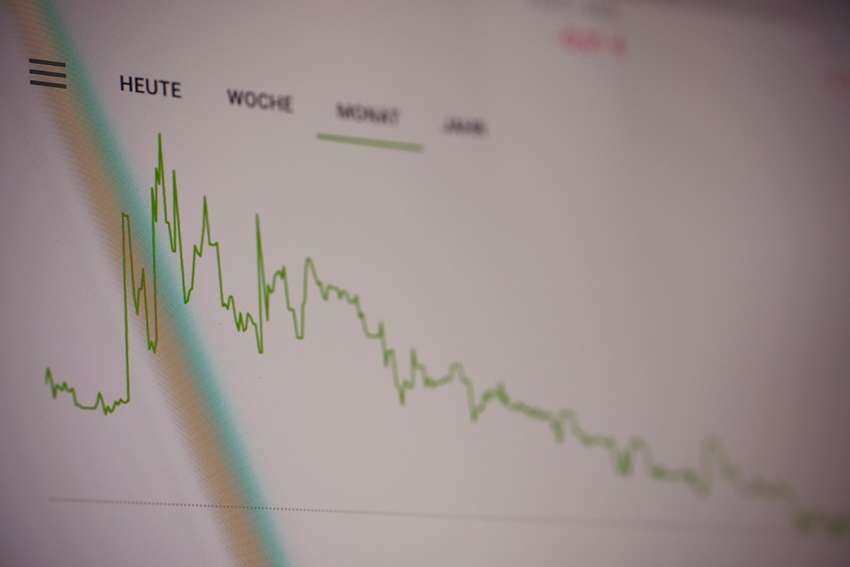Many individuals know about the importance of investing in the stock market and many more build their portfolios by buying stocks in different companies that they like, support, and are familiar with such as Apple, Nike, and Microsoft for example. But from a financial investment perspective, asset allocation is one of the most important aspects of a portfolio irrespective of how popular or famous the companies that are within the portfolio. Building a strong, diversified portfolio is more than simply investing in companies that you like. Every portfolio will require asset allocation, but what exactly does asset allocation entail? Here is what it means.
Simply put, asset allocation is a strategy when investing that is designed to divide capital into different assets with the main goal of reducing your risk as much as possible, while maximizing your returns. In more simple terms, it’s separating your eggs into multiple baskets. This is done so that if one basket gets damaged, only the eggs in that one basket get damaged and not all the eggs. Instead of investing all your capital into 2 – 3 different stocks, asset allocation recommends putting your capital into many different asset classes.
Before assessing and determining asset allocation, you will need to consider the time horizon, (sometimes called planning horizon) which is a point in the future during which the investor expects to own the financial security during that period. They are typically determined by a certain goal that the investor would like to reach, such as purchasing a home, vehicle, or retirement. Time horizons can range from a few months for bonds to decades when it comes to retirement. Although time horizons are not an investment per se, they are an essential part of asset allocation as they give access to capital when you need it most.
When building a portfolio, you have three main different classes of assets to allocate capital into, which are equities, fixed income, and cash and cash equivalents. All three different classes have different risk levels and would rely on the investor’s risk tolerance.
Cash and cash equivalents
This group of assets involves the least amount of risk and can sometimes impact a portfolio negatively when factoring in inflation. Examples would be certificate of deposits, savings account, and money market funds. They also have the lowest returns.
Bonds
When it comes to bonds, there are countless of different types and are considered to be a fixed-income asset. The safest bonds in the world are bonds from the United States of America, while the worst bonds belong to companies that are near bankruptcy.
Stocks
Considered to be equities, they typically involve more risk than bonds as hypothetically, there is a chance of losing 100% of your capital no matter the size of the company.
The above three are the three main types of asset classes that are used for asset allocation, but they are not the only asset classes used by investors to diversify their holdings. Other asset classes used by investors are the following:
Currencies: During times of economic downturns, some countries around the world are impacted greatly, while others are relatively untouched by the economic declines. During the same periods, each country’s currency is also impacted, investors can further diversify when one currency is weak, and another is stronger.
Commodities: This type of asset can have an incredibly large range, from beef, gold, and oil to lithium and natural gas. A typical portfolio will have energy-based commodities included, such as oil or gold to some degree. It is important to note that investing in commodities does not mean having a freezer full of beef or a container filled with crude oil. All the assets are owned virtually, it is all paper based.
Real estate: One of the most common assets owned that is not included in the three main asset classes and can range from single-family homes to large multifamily apartment complexes.
An aspect that investors will need to consider is their risk tolerances, which is the amount of risk an investor is comfortable taking on, especially when the markets are declining. The more risk an investor takes on, the higher the returns and the opposite is true. The less risk an investor takes on, the lower the returns. Investors will need to find their perfect spot for risk versus reward based on a few metrics, such as their age, income, investment goals, and risk tolerance.
The younger the individual, the more risk they can take on and as a result, they are able to allocate more capital to riskier investments such as equities. As a person gets older, assets allocated to stocks for example will be reduced and be allocated towards fixed assets for example. An individual earning a median income or less can invest in moderately or slightly above risky investments due to the chance of an economic downturn. Higher-income individuals can take on more risk and can vary greatly with the amount of risk being taken.
The typical investor who’s allocating their assets are doing it for their personal portfolio and based on that fact, their asset allocation strategy will be based on their age. With a personal portfolio, money market securities and cash are for timelines of one year or less. Bonds are in between cash and stocks, the middle ground of time horizon investing. Stock investing will have a time horizon of more than 5 years, as the value of stocks will not have changed drastically from year to year. Asset allocation does not have a one solution fits all and each portfolio is specifically tailored to a particular individual.
On a more technical note, choosing a combination of the three types of asset classes can be quite challenging. Below are examples of various types of portfolios with varying degrees of risks associated with them:
-Low risk portfolio composition:
- 65% Fixed income securities
- 25% Equities
- 10% Cash and cash equivalents
A large percentage of the assets in a low-risk portfolio are in lower-risk securities such as fixed income. The main objective of a portfolio with this composition is it needs to protect the principal amount, but the portfolio might still be impacted by inflation and due to that, increasing allocation into equities is typically recommended just to keep up with inflation. If investors choose to have slightly more risk, they can decrease their holdings in fixed income securities by 5% – 10% and keep cash holding relatively the same.
-Average portfolio composition:
- 45% Fixed income securities
- 45% Equities
- 10% Cash and cash equivalents
An average portfolio is for the individual that is neither old nor young and is the most balanced when it comes to risk exposure and individuals with longer time horizons to work with. The average portfolio above has a great balance of income-generating capabilities and growth from the stocks.
-Riskier portfolio composition:
- 30% Fixed income securities
- 65% Equities
- 5% Cash and cash equivalents
A portfolio that is riskier would be heavily weighted by its sizable investment in equities and a smaller position in fixed income. This type of portfolio is more suited for an individual that is on the younger side due to its higher risk and volatility as the equities in the portfolio can fluctuate from month to month. Income from such as portfolio is quite limited as there are fewer fixed income securities and is geared more towards capital growth.
Each portfolio composition in the list can be altered to your liking when it comes to allocating your assets. If you are looking for just a little more risk than an average portfolio, you can reduce your fixed income and allocate it to your equities for example. As you mature, you can reduce your holdings in equities and allocate those into the fixed income portion.
There are countless asset allocation strategies to choose from and you will need to continuously adapt the portfolio to your circumstances and those of the market. Asset allocation is an art form, being able to sculpt your portfolio to fit your exact needs as your situation changes over the course of time. This post was written with Financialquazar on Fiverr. I hire writers to write on topics they are experienced in, this way we all learn more. Subscribe for more business, sales and investing posts. Have a lovely day.











